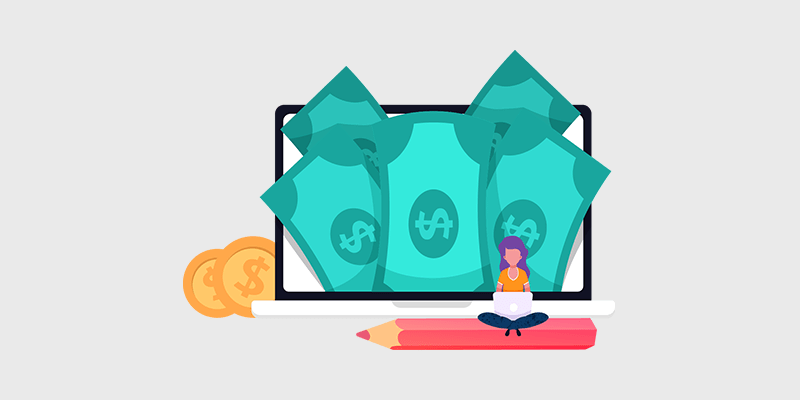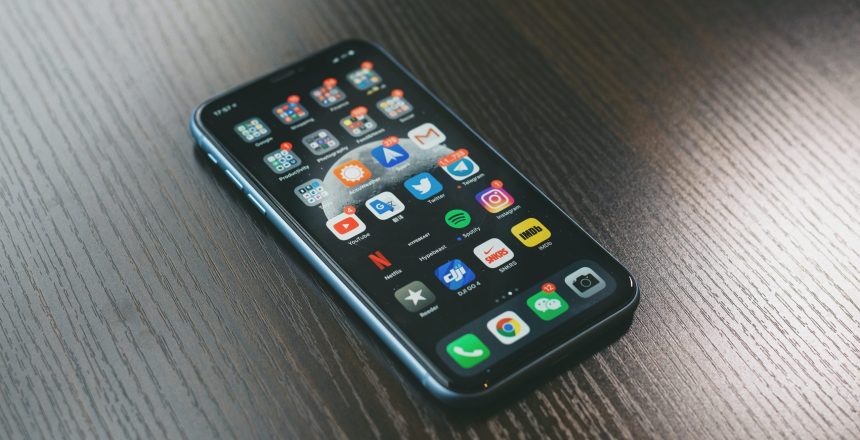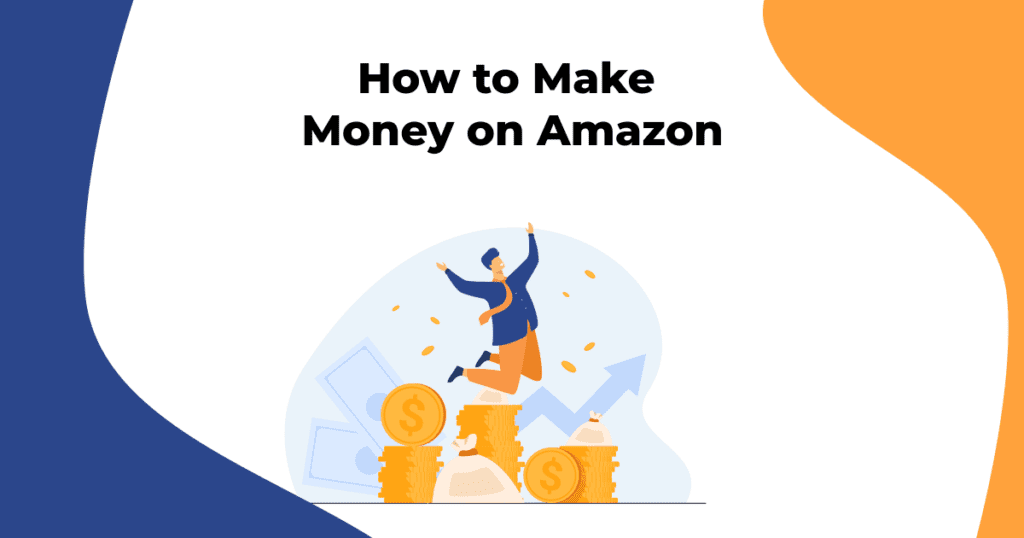Mobile apps have become an integral part of our daily lives. From ordering food, booking a cab, shopping, entertaining, or even meditating, there’s an app for everything.
However, with millions of apps available, how do you ensure that your app stands out? This is where mobile app marketing comes into the picture. And, in this article, we will discuss everything you need to know about it!
What Is Mobile App Marketing?
Mobile app marketing is the process of promoting and advertising your mobile app to attract users and drive engagement. It involves a range of strategies and techniques to make your app visible, create brand awareness, and increase downloads.
The goal of mobile app marketing is not just to acquire new users but also to retain and engage them. This can be a challenging task due to the fierce competition in the app marketplace. But it’s not impossible, all you need is to create a marketing plan that can help you stand out!
Mobile App Marketing vs Mobile Marketing: Differences

Mobile app marketing and mobile marketing are often used as synonyms, but they are not the same. Mobile marketing refers to any marketing activity that takes place on a mobile device like mobile web marketing, SMS marketing, and mobile app marketing.
On the other hand, mobile app marketing refers specifically to the marketing of mobile apps. It involves promoting your application to potential users, acquiring new users, and retaining the existing ones to drive revenue and grow your business.
Mobile app marketing is different from other forms of mobile marketing because it focuses specifically on promoting and driving engagement with a mobile app. Other forms of mobile marketing may focus on driving traffic to a mobile website, promoting a product or service, or generating leads.
How Does Mobile App Marketing Work?
So you’re wondering how mobile app marketing works? Well, it’s actually pretty simple. The goal is to get your app in front of as many people as possible and convince them to download and use it.
But, let’s face it, there’s a lot of competition out there. That’s where we, Orquidea, come in. We are experts in mobile app marketing and can help you navigate the crowded app marketplace to stand out from the rest.
Our team will work with you to develop a customized marketing strategy that takes into account your app’s unique features and target audience. We’ll help you optimize your app’s app store listing and run targeted advertising campaigns to get your app in front of the right people.
With Orquidea’s help, you can drive more downloads, increase user engagement, and ultimately grow your app’s revenue. What are you waiting for?
What Are the Mobile App Marketing Stages?
Mobile app marketing can be broken down into three stages: acquisition, activation, and retention. Each one of them can require different strategies that we will see further in the reading.
- Acquisition: The process of acquiring new users for your app. Which involves using a range of strategies such as app store optimization, social media marketing, paid advertising, and influencer marketing to reach potential users and convince them to download your app.
- Activation: The procedure of getting users to engage with your app and complete specific actions, such as signing up for an account or making their first purchase. This requires creating an intuitive and user-friendly onboarding experience, and offering incentives to encourage users to take action.
- Retention: The process of keeping users engaged with your app over the long term. This involves using strategies such as push notifications, personalized experiences, and gamification to keep users coming back to your app and using it on a regular basis.
Acquisition
Acquisition is the first stage of mobile app marketing, and it involves acquiring new users for your app. Here are some key strategies for acquiring new users:
- App Store Optimization: Optimizing your app’s metadata to improve its visibility and ranking in the app store search results. By using relevant keywords, creating an eye-catching app icon, and designing engaging screenshots and videos, you can attract more users to your app.
- Social Media Marketing: Using social media platforms to promote your app and reach a wider audience. You can create engaging content, run ads, and collaborate with social media influencers to promote your app and attract new users.
- Paid Advertising: Running ads on different platforms such as Google AdWords, Facebook Ads, and Apple Search Ads. You can target specific user segments and demographics to reach a broader audience and drive more downloads.
- Influencer Marketing: Partnering with social media influencers to promote your app to their followers. Influencers can help you reach a wider audience and build brand awareness.
- App Referral Programs: Incentivizing users to refer their friends and family to your app. You can offer rewards such as discounts, promotions, or in-app currency to users who successfully refer new users to your app.
- Content Marketing: Creating high-quality content such as blog posts, videos, and infographics that are relevant to your app and target audience. By sharing your content on social media and other platforms, you can attract more users to your app and establish your brand as an authority in your niche.
Activation
Activation is the second stage of mobile app marketing, and it involves getting users to engage with your app and complete specific actions. Here are some key strategies for activating users:
- Onboarding Experience: This is the first impression that users have of your app, and it’s critical to make it a positive one. By creating an intuitive and user-friendly onboarding experience, you can help users understand how your app works and encourage them to start using it.
- Incentives: Offering incentives such as discounts, promotions, or in-app currency can help motivate users to take specific actions, such as making their first purchase or completing a specific task.
- Personalization: Tailoring the user experience to each individual user based on their preferences and behavior. By offering personalized experiences, you can make your app more engaging and increase the possibility of users keeping on using it.
- Gamification: Adding game-like elements to your app to make it more engaging and fun. By offering rewards, challenges, and badges, you can motivate users to continue using your app and complete specific actions.
Retention
In today’s competitive mobile app landscape, user retention is just as important as user acquisition. Retaining users means that they continue to use your app over a long period of time, leading to increased revenue and a better return on investment.
To achieve this, app developers must focus on strategies that keep users engaged and interested in their app. So, here are some key strategies for retaining users:
- Push Notifications: By sending personalized and targeted notifications, you can provide users with information about new features, promotions, and other relevant information.
This can encourage users to open your app and take action, leading to increased engagement and retention. However, it’s important to use push notifications judiciously, as too many notifications can be annoying and lead to users uninstalling your app.
- Customer Service: Providing excellent customer service can help you build trust and loyalty with your users.
When users have issues or questions, responding quickly and helpfully can make a big difference in how they view your app. This can lead to increased satisfaction and a higher likelihood of continued use.
- Gamification: This is a technique that can be used to make your app more engaging and fun for users. By incorporating game-like elements such as rewards, challenges, and leaderboards, you can incentivize users to continue using your app.
It can be particularly effective for apps that involve repetitive or mundane tasks. By adding an element of fun and competition, you can make the experience more enjoyable for users and encourage them to continue using your app.
- Personalization. By providing personalized experiences, you can make users feel more connected to your app. This can include personalized recommendations, content, and messaging based on users’ behavior and preferences.
By tailoring your app to each user, you can make them feel valued and more likely to continue using your app over time.
Who Does Mobile App Marketing Benefit?

Mobile app marketing is a complex and ever-evolving field, with numerous benefits for different stakeholders and everyone involved in the app ecosystem.
Businesses are the primary beneficiaries of mobile app marketing. By creating an app, they can connect with their customers directly, provide them with relevant information, and engage with them on a personal level.
Mobile app marketing allows businesses to promote their products and services in a more personalized and engaging way, creating a loyal customer base and increasing their revenue.
Mobile app marketing also benefits mobile app developers. With the increasing demand for mobile apps, developers have a vast market for their products.
By promoting their apps, developers can attract more users and increase their revenue. Mobile app marketing can help them reach a broader audience, increase their brand awareness, and establish themselves as leaders in their field.
Consumers are also significant beneficiaries of mobile app marketing. Mobile apps can provide them with a wide range of benefits, including convenience, accessibility, and personalized experiences.
Mobile app marketing allows consumers to discover new apps that are relevant to their needs, which can help them save time and money. Moreover, it can keep consumers informed about new features, updates, and promotions, allowing them to stay connected with their favorite brands.
In addition to businesses, developers, and consumers, mobile app marketing also benefits mobile ad networks and app stores.
Mobile ad networks help businesses to promote their apps by delivering targeted ads to specific audiences. App stores, on the other hand, provide a platform for developers to showcase their apps and reach a wider audience. Mobile app marketing can help these stakeholders to increase their revenue and establish themselves as key players in the mobile app ecosystem.
Conclusions
Mobile app marketing is essential for app developers, businesses, users, and advertisers who want to take advantage of the growing mobile app market. Its importance is likely to grow in the future as smartphones continue to become an essential part of modern life.
By using a range of strategies such as app store optimization, social media marketing, paid advertising, influencer marketing, and gamification, you can attract new users, activate them, and retain them over the long term.
It’s important to understand that mobile app marketing is not a one-time event, but rather an ongoing process that requires continuous effort and attention. So, experiment with different strategies until you find one that suits you the best!
Staying up to date with the latest trends and best practices in mobile app marketing, can help you stay ahead of the competition and create apps that users love and keep coming back to. What are you waiting for?
Here Is Everything You Need to Know About Mobile App Marketing! Learn How to Get More Users in One Click!













